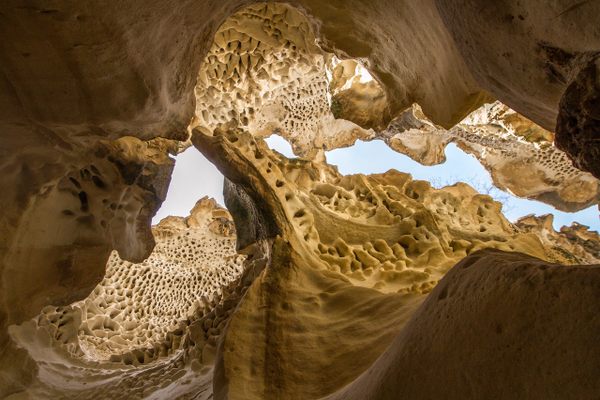This ancient limestone canyon in Kazakhstan’s Mangystau region has features that evoke imaginative comparisons, from porous white chocolate to a bleached coral reef. The canyon walls are etched with lattice rock in a honeycomb symmetry, the texture like a bare skeleton in places where the white sand has hardened into bone. The sea creatures, plant life, and minerals that comprise the canyon were deposited here over 40 million years ago when these lands were submerged under the long-gone Tethys Ocean.
The unusual composition of materials and differing rates of erosion have resulted in unique formations, with the sculpting process aided by occasional rainfall to sharpen the edges and fine-tune the corners. Throughout the day, the sun’s rays angle to gain entry through the labyrinth of rock, but except for a short period of direct midday sun, the canyon is mostly impenetrable, the light blocked by wave-curl rocks frozen mid-break overhead. The walls can rise as high as six meters while the crevices dive down into the depths. Narrow passageways widen into roomier corridors, shaped by surging water forcing its way through the canyon. The canyon is not exceptionally large, but the variety of formations and perspectives leaves room for exploration.
The canyon’s sharp swooping rocks, shifting light, and dramatic formations drive comparisons with Arizona’s Antelope Canyon, however, the similarities have their limits. Where Antelope Canyon is painted in sun-washed hues and well-trodden by tourists, Ybykty is desolate, devoid of color and crowds.

